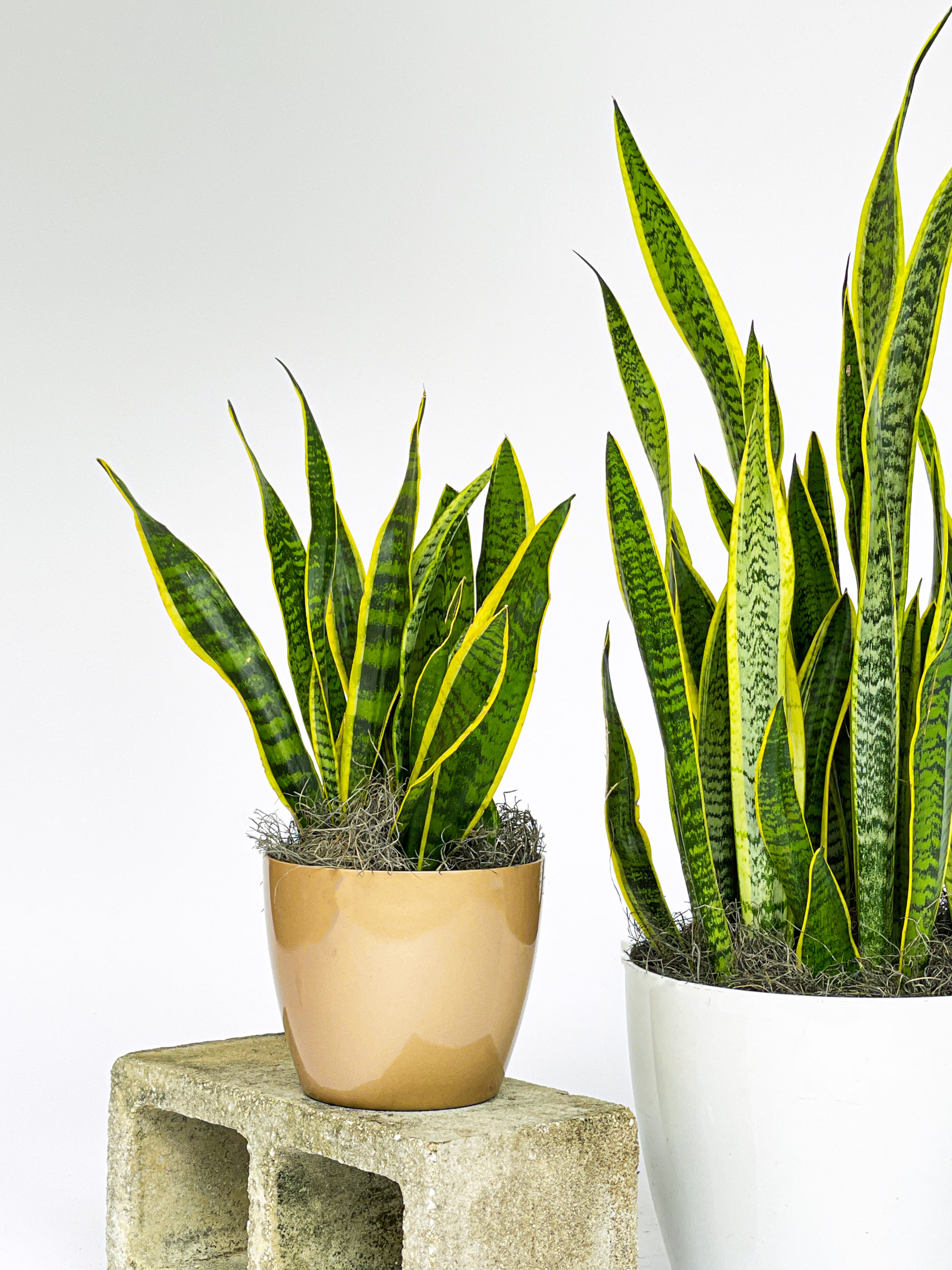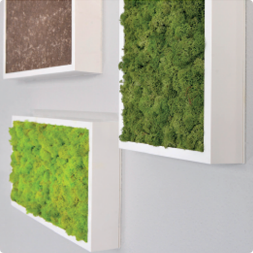How to Care for a Snake Plant
The Snake plant has always been a go-to houseplant for both novice and seasoned plant owners alike. Why? Well aside from its enticing leaves, this plant needs very, very little care- in fact, the only thing ranked lower than the Sansevieria on a scale of difficulty is a pet rock!
Sometimes referred to as Mother-In-Law Tongue or “Sans” for short, this African plant immediately stands out from the rest with its stiff, vertical, spear-like leaves making it a popular choice for modern interior designs. Their sharp look is what gave them the nickname “mother-in-law tongue” in the first place! The Sans remains a popular choice because of how incredibly easy-going and adaptable it is, requiring the absolute bare minimum when it comes to a care routine. Seriously, the only way you’ll kill this plant is by over-loving it.
The Sansevieria comes in a couple of different varieties- Zeylanica and Laurentii. The Zeylanica is known for the classic variegation patterns of dark and light greens throughout its vertical leaves. The Laurentii, on the other hand, has bright yellow and light green leaf margins with a lot more character than its cousin, Zeylanica, and adds a pop of color to any space. Both snake plant varieties are offered here at Plantz in either the 10” or the 14” grow pots and ranging from 2 to 4 feet in height.
While the Sans is practically indestructible, there are a few key things you should know when caring for your new plant.
The Ultimate Snake Plant Care Guide
Water
The only thing that can really ever bring a Sansevieria down is overwatering. Native to arid regions of Africa and southeastern Asia, the snake plant thrives in dry soil and only needs the occasional dose of H2o- you can forget to soak this plant for up to a month and it will still forgive you. Let the soil mostly dry out in between waterings and you’ll have yourself a happy plant! To know when it’s time to water, it’s better to use a soil probe, such as our Soil Sleuth, than relying on the old finger test to ensure that your plant is actually thirsty.
Light
One of the many draws to snake plants is how versatile they are- low-light, full-sun, indoor, outdoor- this plant can adapt to nearly any condition and still flourish. While the Sans will be happiest in bright, indirect sunlight, it can also survive fairly dim lighting situations. If your snake plant isn’t getting enough sunbeams, it will let you know with sad, droopy leaves. Be careful not to suddenly move your Sans from one lighting condition to another, and instead gradually move it towards its new home.
Temperature
For the most part, try to keep your snake plant in as stable an environment as possible. This means making its home away from heaters, AC vents, or drafty windows. The Sansevieria prefers warmer conditions between 70 and 90 degrees and will begin to suffer in anything below 50 degrees, so keep an eye on the weather if placing your snake plant outdoors. Overall, if the temperature in your home is comfortable for you then it’ll be so for your plant too.
Nutrition
Like all of our plants here at Plantz, the Sans will be loaded with nutrients from its nursery production for the first six months or so after you receive it. After that, it can be fed quarterly with a complete fertilizer formulated for indoor plants- but since this plant is such a slow grower, it can go quite some time without fertilizer.

Benefits of Having a Snake Plant
So the snake plant is both good-looking AND incredibly hard to kill- what more could it possibly offer? Well, strap in folks, because Sansevieria has some pretty impressive health benefits to boot.
Remove toxic air pollutants
The Sans was one of the few plants featured in NASA’s Clean Air Study in the 1980s. In this study, NASA found that certain houseplants could absorb harmful toxins from the air and improve air quality in the space they were in. Snake plants absorb and remove harmful pollutants such as carbon monoxide, benzene, and formaldehyde, and can fight off airborne allergies!
Release oxygen- even at night
Snake plants have a unique ability to perform photosynthesis at night, which allows them to release oxygen not during the day but instead while you sleep! This makes it the perfect bedroom companion to improve air quality and flow and help you get a better night’s rest, feeling rejuvenated and refreshed each morning.
Increase well-being
The Sansevieria purifies air better than most indoor plants since it absorbs excessive amounts of CO, making it an ideal choice for both home and office spaces alike. In the home, this plant can improve airflow and help you get a healthier night of sleep. When placed in an office or work environment, the snake plant can increase productivity and creativity, decrease stress, and boost overall office morale. Wherever you choose to keep your snake plant, you can sleep better (literally) knowing that it’s working hard to keep you as healthy and happy as you’re keeping it.
And there you have it! As if caring for a Sansevieria wasn’t easy enough, we’ve made it completely fool-proof. Contact one of our care specialists today to find the best snake plant for you and obtain a new plant buddy for life!


















